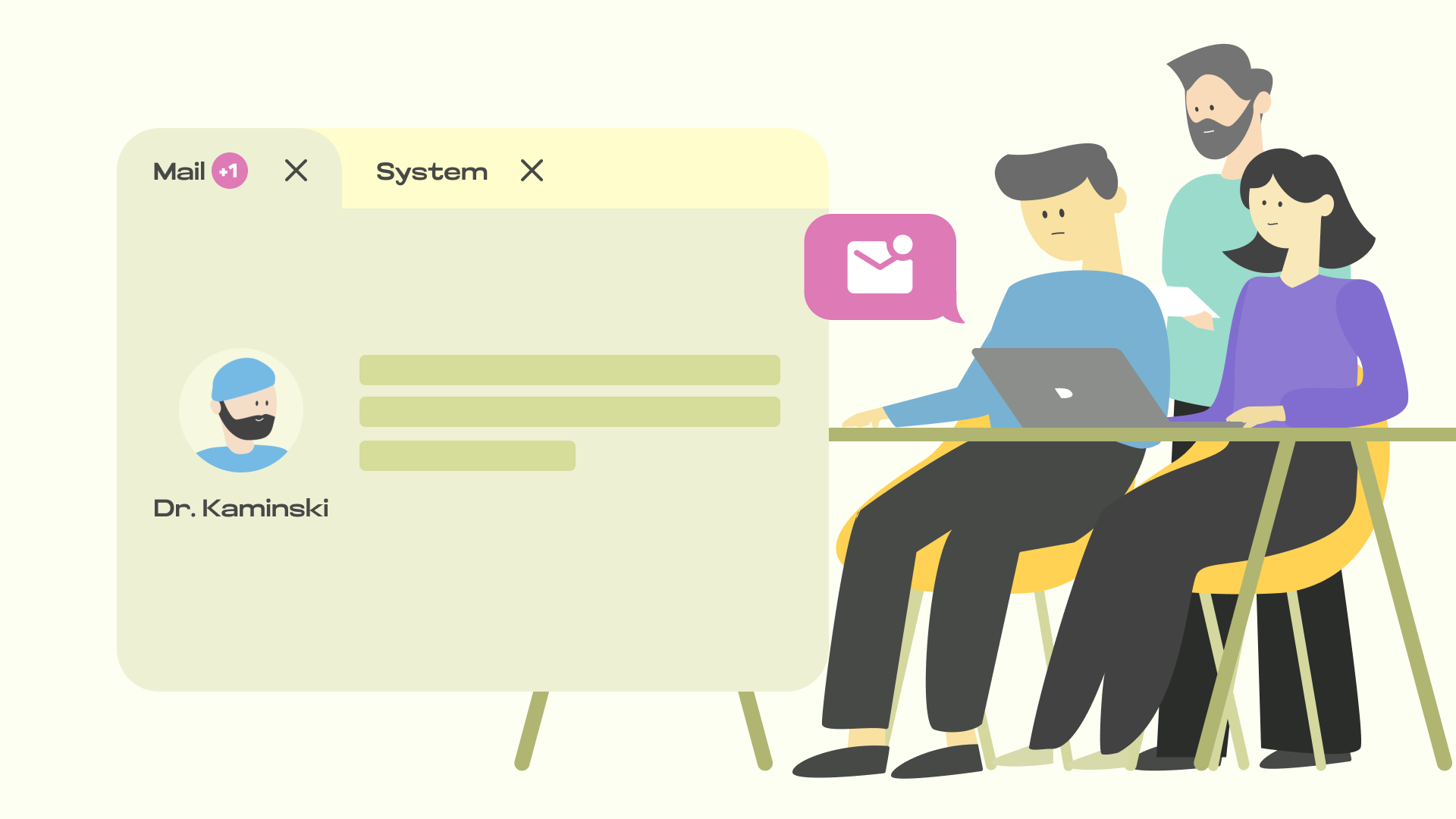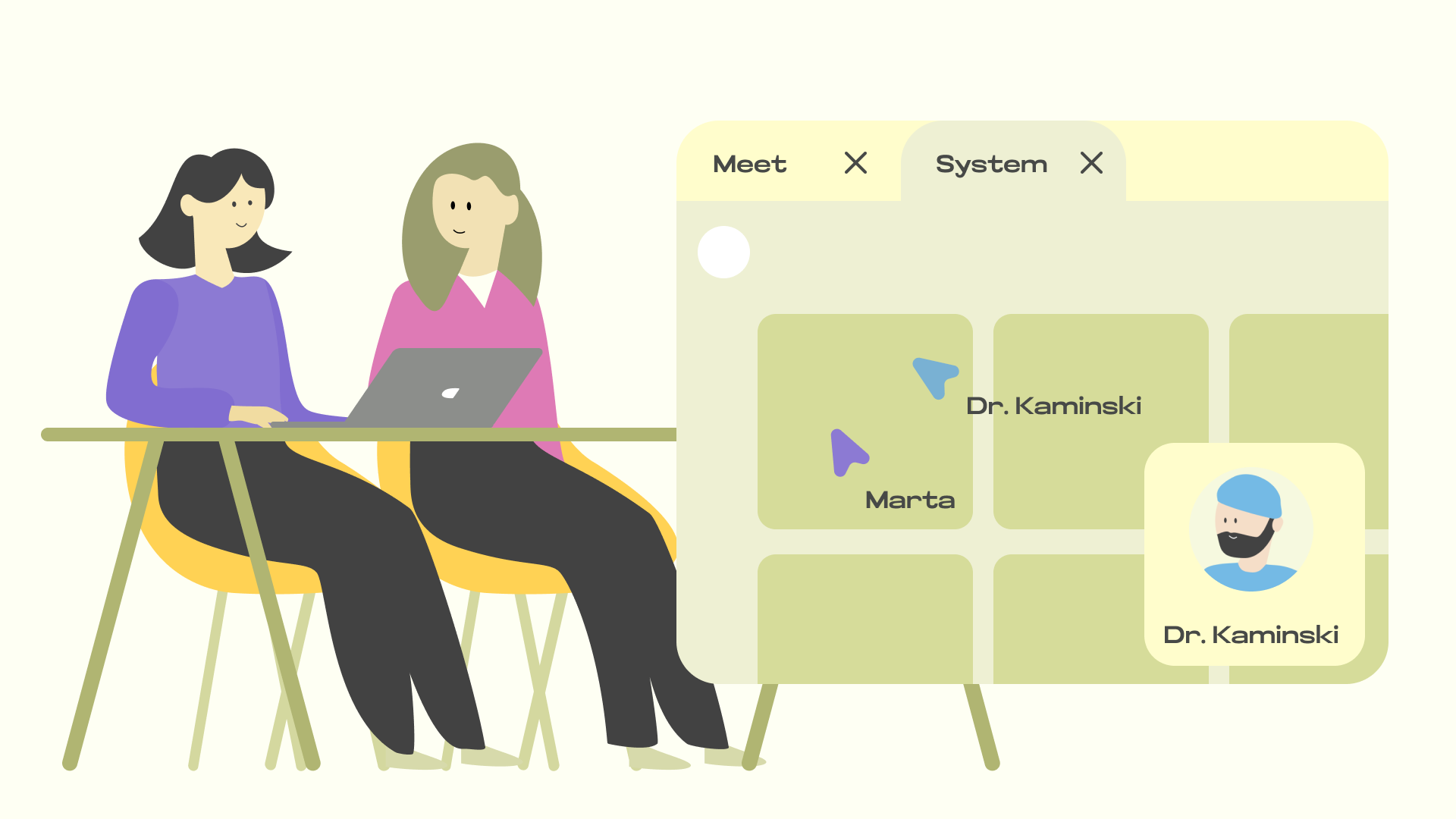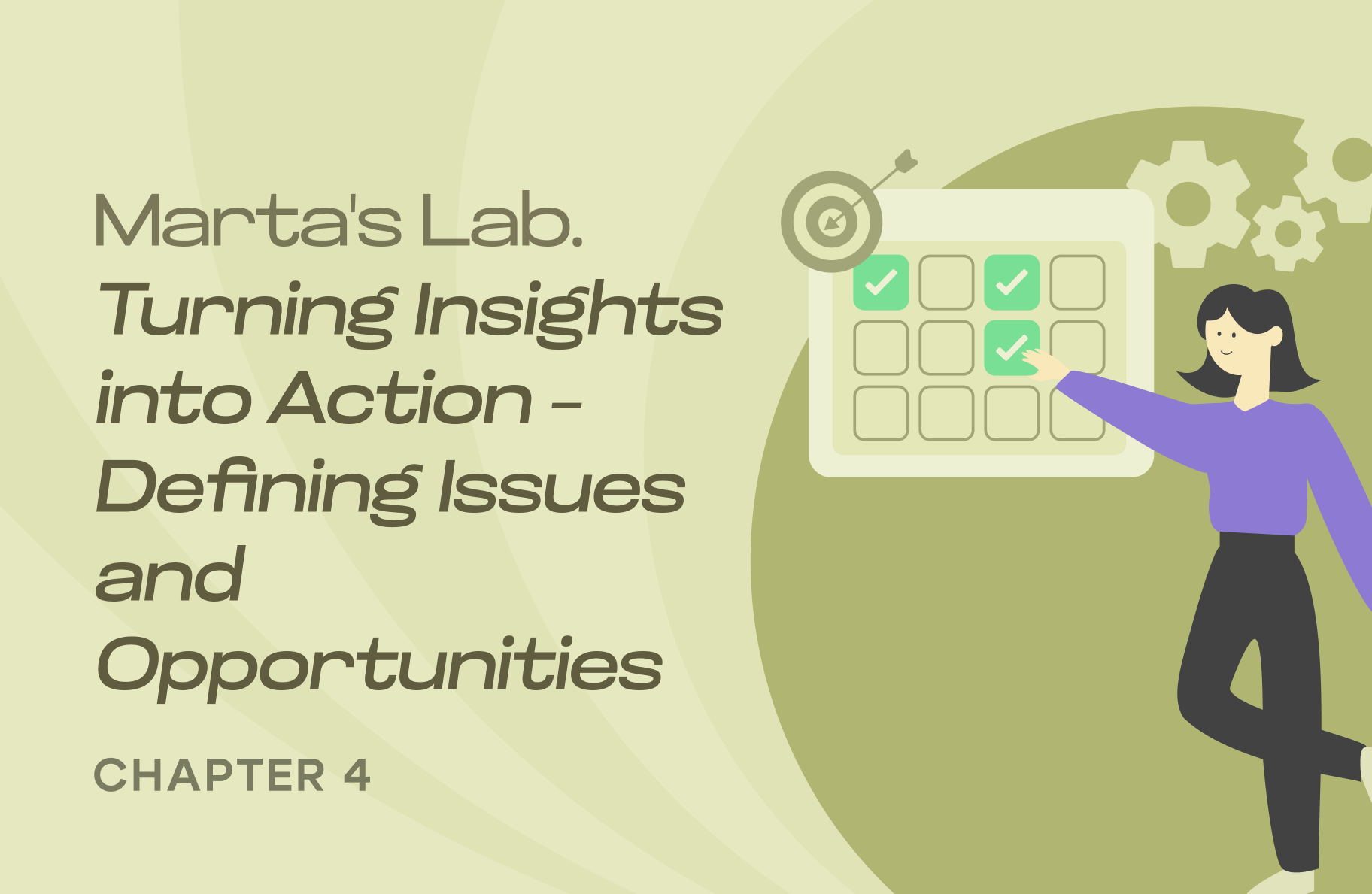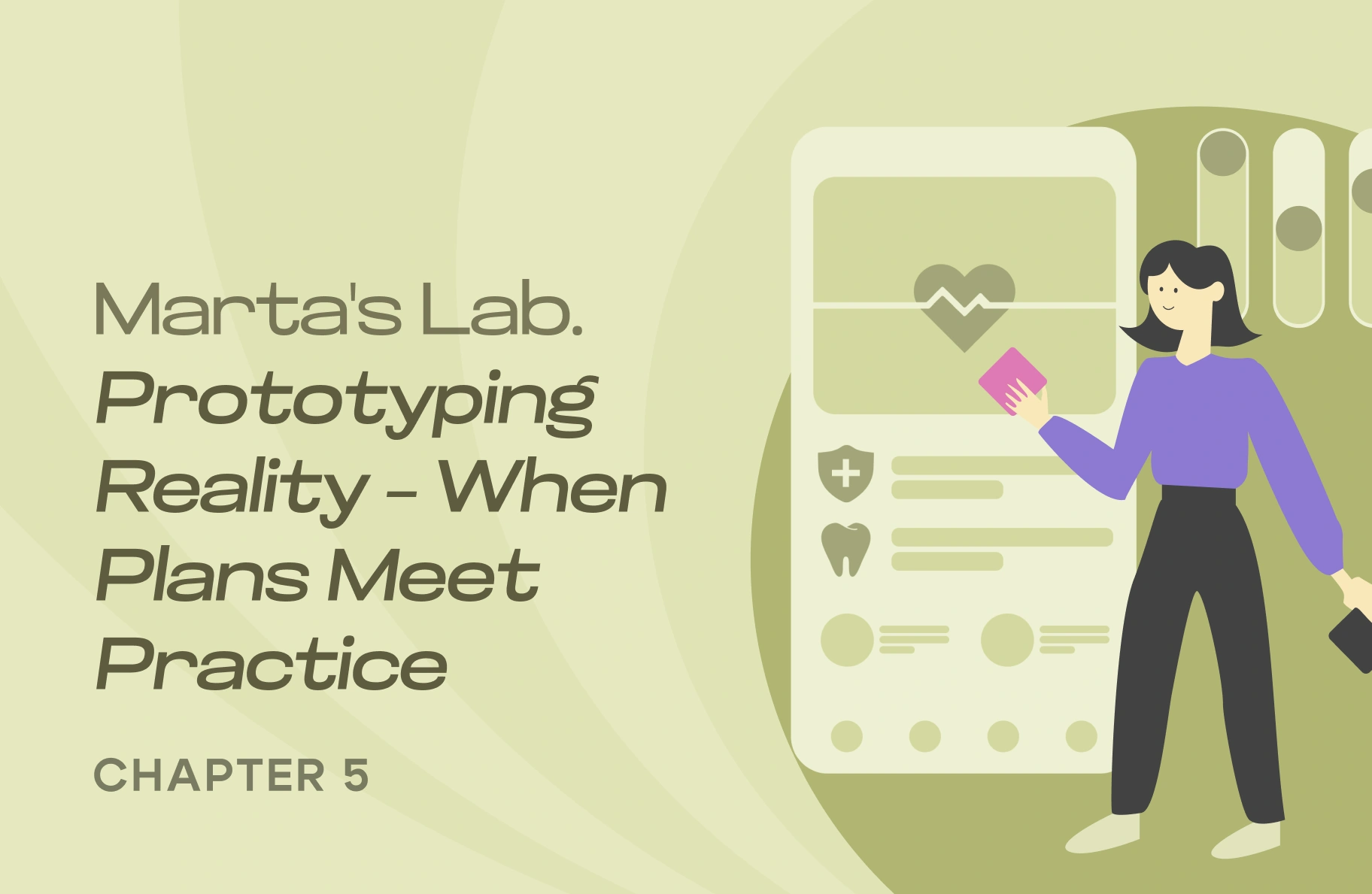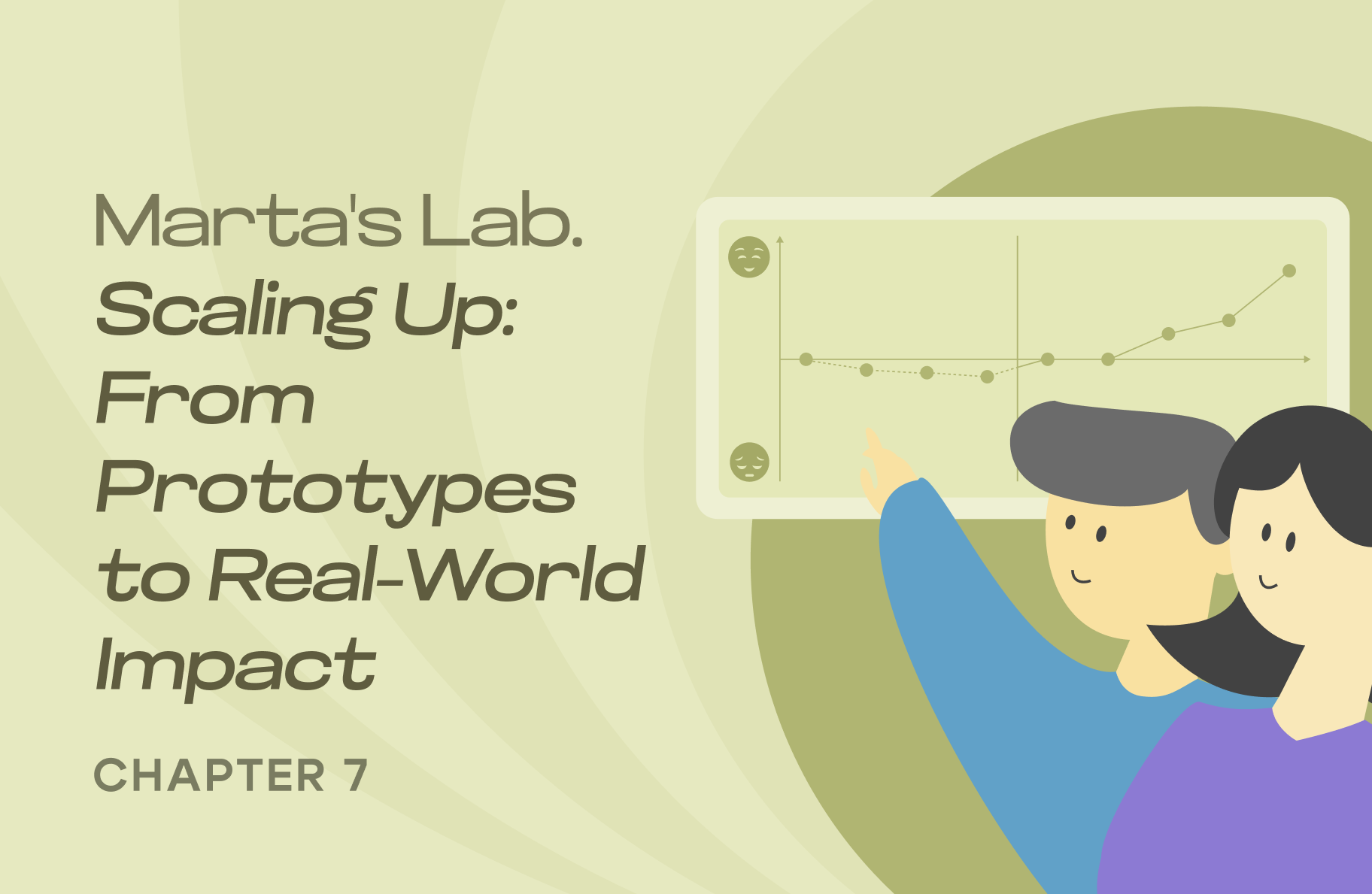
After weeks of mapping out processes, brainstorming solutions, and investigative rehearsals, Marta’s lab was finally ready to test their ideas in real life. This wasn’t just a test of new features. It was a test of how well all the moving parts would work together, and more importantly, how clients would respond when faced with change.
The Excitement of New Ideas
The atmosphere in the lab was full of anticipation. The ideas that once lived on sticky notes, whiteboards and paper prototypes were now part of a fully functioning system: a streamlined digital order form, a restructured communication flow, and a new tracking interface for dentists.
The team decided to begin testing their new system with a small group of existing clients, starting with Dr. Kaminski. Marta was confident this would be the perfect starting point, as Dr. Kaminski had been a loyal client for years, and she knew he would provide valuable feedback.
Marta
This is where we see what really works and what doesn’t.
Marta said as she gathered the team for their soft launch briefing.
Yasmin grinned.
Yasmin
A live test. Controlled, but real.
Levi, the service design consultant, nodded.
Levi
Exactly. It’s less about testing individual features now, and more about how the system performs under pressure.
The First Setback: Resistance to Change
At first, the test seemed to go smoothly. Marta’s team monitored backend activity as Dr. Kaminski was onboarded to the new system. The tools were designed for simplicity: fewer clicks, clearer instructions, and real-time order visibility.
But within hours, the expected order hadn’t appeared in the system. Instead, Dr. Kaminski sent in his request the old way — via email.
Marta stared at her inbox, eyebrows raised.
Marta
He’s not even trying it?
Levi glanced at the system dashboard.
Levi
No logins, no order activity. He went straight back to email.
Marta
I thought he’d be the first to appreciate this.
Levi
Some people don’t like change. This is normal. But we’ll need to make sure it’s easy for him to transition. Let’s get feedback and understand his resistance.
What the team had hoped would be a smooth system trial was beginning to reveal a deeper truth: transformation doesn’t hinge on design alone — it hinges on adoption.
Revisiting the Journey Map
Marta and the team quickly regrouped. They turned to the customer journey map they had created earlier. Had they missed something important in the process? Were there any barriers that could be making Dr. Kaminski hesitant to adopt the new system?
Together, they analyzed each touchpoint in his journey:
- Order submission: Was the new system simple enough to replace the old way?
- Communication: Did the platform provide clear, immediate updates?
- User experience: Was the system too complex or intimidating?
As the team discussed, they realized something: while the new system was designed to improve communication and efficiency, it hadn’t fully addressed the trust issues that some long-term clients, like Dr. Kaminski, had. He was comfortable with the old way — he knew it worked.
Yasmin
We need to offer him a bridge. Let’s give him a personal walkthrough of the new system and show him how it will save him time.
Feedback Loops and Iteration
The team immediately reached out to Dr. Kaminski to offer a personal training session. At the same time, they decided to hold off on rolling out the new system to other clients until they had ironed out these initial kinks.
Marta
Let’s fix it. But we need to fix it once and for all.
Levi
Testing isn’t about perfection. It’s about learning and improving. We need to take each piece of feedback and adjust.
The next day, Dr. Kaminski agreed to the walkthrough. Marta and Yasmin walked him through the new features, highlighting how the system could reduce the back-and-forth and save him time. Dr. Kaminski was skeptical but agreed to give it a try.
Over the next few days, the feedback started trickling in from other clients. Some were enthusiastic about the new system, while others, like Dr. Robinson, expressed frustration with the complexity of the portal.

Dr. Robinson
I don’t need all this tech. I just want my orders on time.
Iterating Quickly: Adjustments in Real Time
With these new insights, the team quickly realized they needed to make several changes:
- Simplify the order form: Dr. Robinson’s comment made it clear that some clients didn’t need all the bells and whistles of the new system. They decided to create a streamlined version that allowed for quick order submission.
- Personalized communication: They revamped the messaging system to provide more tailored updates and notifications based on client preferences.
- Tech support: Marta assigned Yasmin to act as the main contact for tech support during this phase, offering live troubleshooting and helping clients through any hurdles.
As the team implemented these changes, Marta could see their efforts paying off. Clients who had been resistant to the new system were starting to warm up to it, and even Dr. Kaminski began using the portal after a few more personalized sessions.
A Setback Within a Setback: The Delivery Problem
Just when Marta thought things were getting back on track, the delivery team encountered an issue. The new tracking system, designed to send alerts and updates to delivery staff, malfunctioned. A critical restoration was sent to the wrong address, causing delays and confusion for both the client and the patient.
The team was in a panic.
Yasmin
This wasn’t supposed to happen. The system worked fine during testing!
Levi
We need to go back to the blueprint.
Marta
Let’s fix it. But we need to fix it once and for all.
A Full Circle Moment: Back to the Drawing Board
The team went back to the service blueprint, revisiting each step of the process. They reexamined how the technology, communication, and delivery systems intersected.
They realized the delivery issue had arisen because the tracking system wasn’t integrated well enough with the rest of the service flow. The team had focused too heavily on the front-end client experience and hadn’t considered the backend logistics thoroughly enough.
After another round of testing and adjustments, the team implemented a stronger integration between the delivery tracking system and the rest of the workflow. They also ensured that clients would receive real-time updates if any issues occurred.
The Road Ahead
After days of iterations, the lab was finally able to roll out the new system to all of its clients. It wasn’t perfect, but it was a significant improvement. Marta’s team had learned to embrace the feedback loop, understanding that the real power of prototyping lay not in creating the perfect solution but in using setbacks as a tool for growth and improvement.
Marta
There’s no straight path to success. But we’re on the right track.
What’s Next for Marta’s Lab?
In the next chapter, Marta and her team will explore the final stage of their service design journey: scaling the changes they’ve made, measuring their success, and continuing to adapt based on ongoing feedback. Will the lab’s transformation be sustainable? Or will the challenges of growth and innovation test them once again?
Stay tuned for the next chapter in Marta’s journey.
